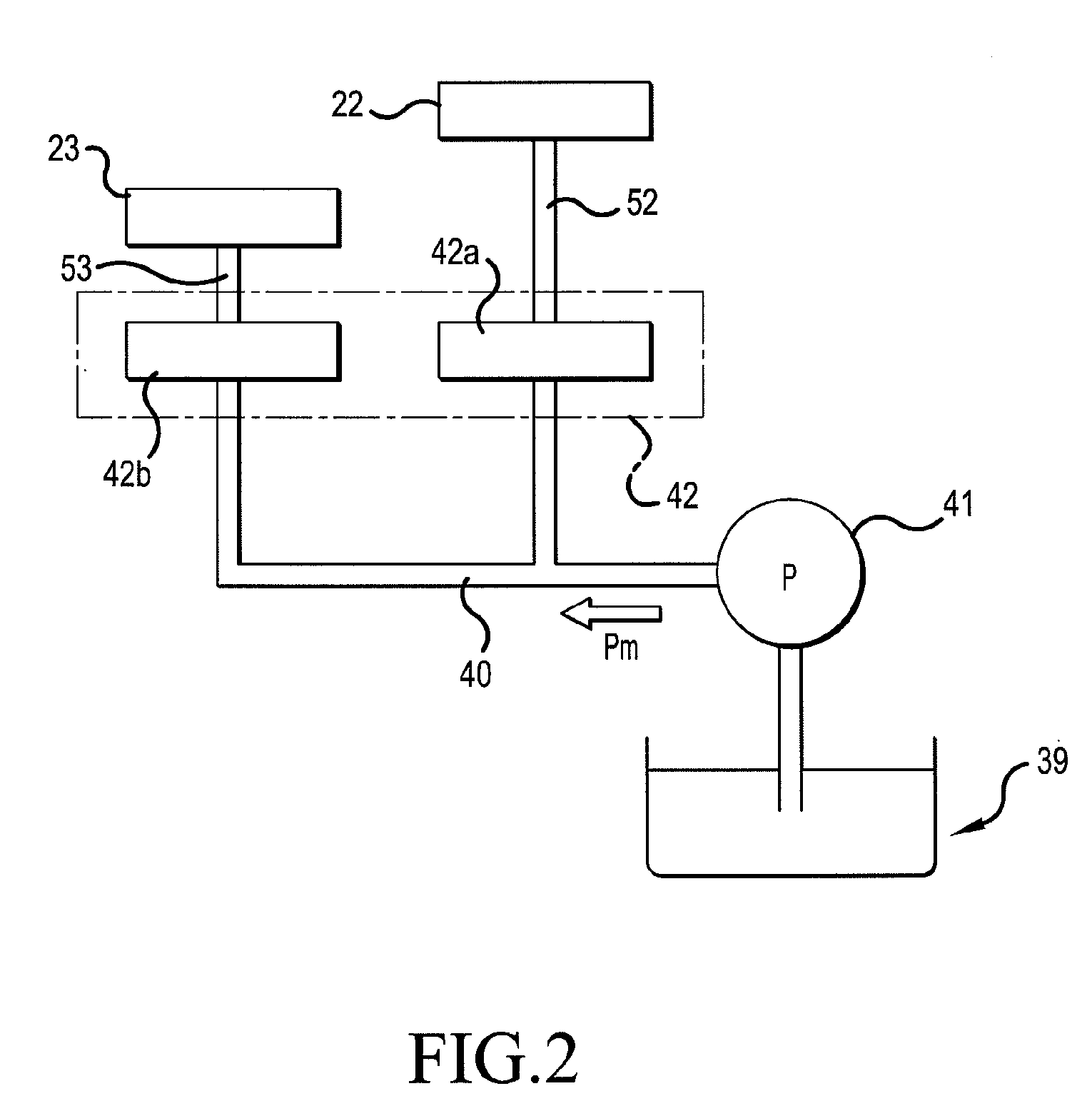Clutch control system for transmission
- Summary
- Abstract
- Description
- Claims
- Application Information
AI Technical Summary
Benefits of technology
Problems solved by technology
Method used
Image
Examples
Embodiment Construction
[0032]Now, a preferred embodiment of the present invention will be described below, referring to the drawings. FIG. 1 is a system block diagram of an automatic / manual transmission (hereinafter referred to as AMT) as an automatic transmission applied to a motorcycle and peripheral devices for the transmission. The AMT 16 connected to an engine 11 is controlledly driven by a clutch hydraulic system 17 and an AMT control unit 18 as a transmission controller. The engine 11 has a throttle-by-wire type throttle body 19, and the throttle body 19 is provided with a motor 20 for opening and closing the throttle.
[0033]The AMT 16 includes transmission gears 21 for a multiplicity of gear speeds, a first clutch 22, a second clutch 23, a shift drum 24, and a shift control motor 25 for turning the shift drum 24. A multiplicity of gears constituting the transmission gears 21 are respectively connected to or loosely fitted over a main shaft 26, a counter shaft 27, and a transmission gear output shaf...
PUM
 Login to View More
Login to View More Abstract
Description
Claims
Application Information
 Login to View More
Login to View More - R&D
- Intellectual Property
- Life Sciences
- Materials
- Tech Scout
- Unparalleled Data Quality
- Higher Quality Content
- 60% Fewer Hallucinations
Browse by: Latest US Patents, China's latest patents, Technical Efficacy Thesaurus, Application Domain, Technology Topic, Popular Technical Reports.
© 2025 PatSnap. All rights reserved.Legal|Privacy policy|Modern Slavery Act Transparency Statement|Sitemap|About US| Contact US: help@patsnap.com



